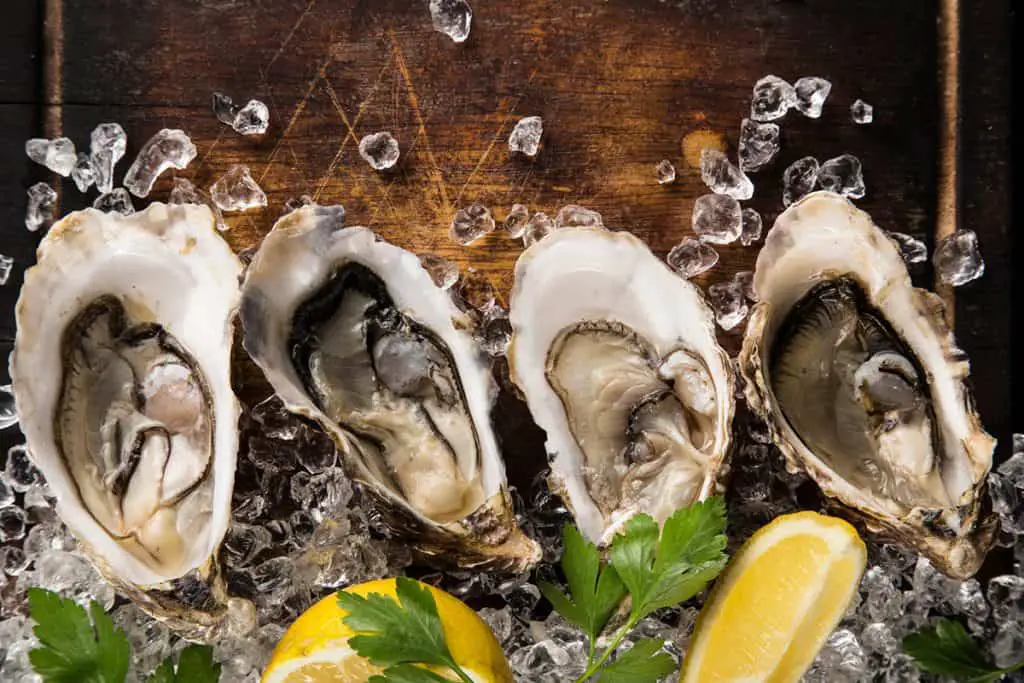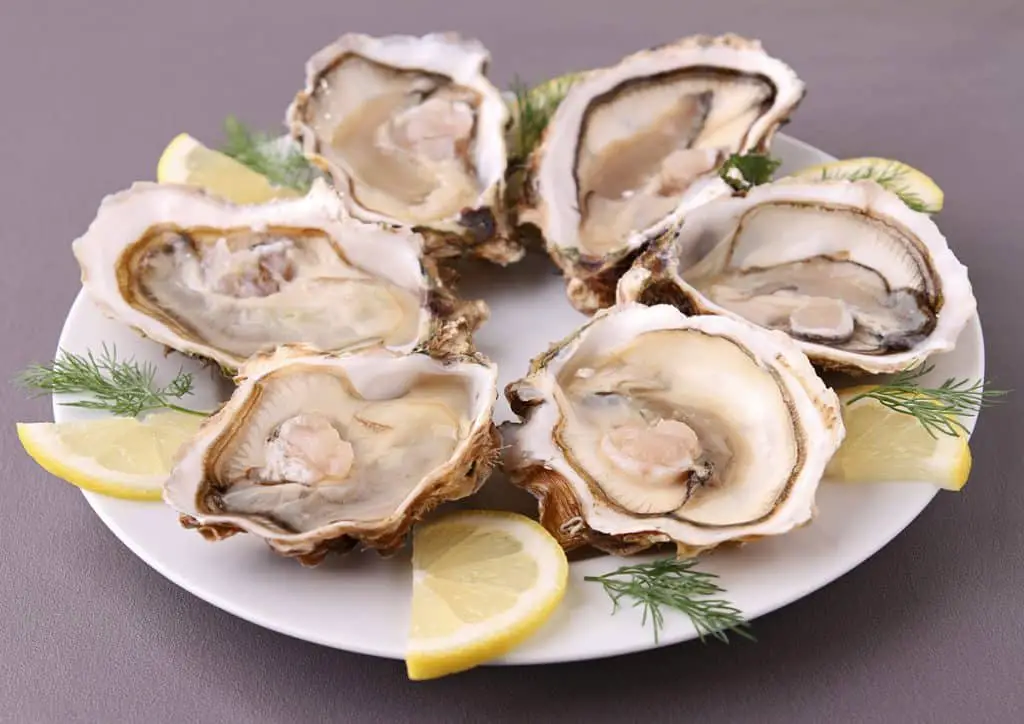Freezing Oysters The Right Way (5 Easy Steps)
Today, many people love eating oysters because they’re a delicious delicacy full of micronutrients. The micronutrients can improve brain health, slow bone loss, prevent cardiovascular disease, and many more. While it’s best to eat oysters while they’re fresh, is it possible to freeze them?
You can freeze oysters and thaw them later—they will be fresh and safe to eat. However, since you can’t eat oysters raw after thawing, make sure to cook them immediately to avoid food poisoning. Once frozen and thawed, the oyster’s color, texture, and flavor may change slightly.
In this article, I’ll discuss what happens when you freeze oysters, how to freeze oysters (including live oysters in the shell) and thaw them, plus how long you can keep frozen oysters. Let’s get started.
What Happens When You Freeze Oysters?
You can freeze both live (in the shell) or shucked (out of the shell) oysters.
When you freeze live oysters, they’ll die in the freezer, however, their shells will stay intact to protect the shellfish from freezer burn and preserve freshness. Alternatively, you can freeze oysters that have been shucked (meaning they’re out of their shells). Both methods are safe when done properly.

The following discusses what happens when you freeze oysters in detail.
Live Oysters Will Die in the Freezer
If you have excess live oysters, you can freeze them in the shell to eat at a later date. However, when you freeze live oysters, they will die inside their shell as (most) living organisms obviously can’t survive in a frozen environment.
Freezing oysters in the shell will keep them fresh and protect the meat from any negative effects of the cold.
Note: Once frozen and thawed you can’t eat the oysters raw. You’ll need to cook them to prevent the risk of consuming any harmful bacteria that might form on the oysters as they thaw.
Shucked Oysters Freeze Like Other Uncooked Seafood
As mentioned earlier, shucking oysters removes the meat from the shell; you do so using a special shucking knife (Amazon).
So, when you freeze shucked oysters, you’ll freeze just the meat. Since the meat is already out of the shells, shucked oysters freeze like any other uncooked seafood.
Again, you cannot eat the oysters raw when they thaw to avoid the risk of food poisoning. Therefore, you have to cook the oysters before eating them.
How To Freeze Oysters (Shucked or In The Shell)
The way you freeze oysters also depends on whether the oysters are still in the shell or already shucked. If there’s enough space in your freezer, you can freeze live oysters, but if the room in the freezer is limited, you can freeze the oysters after they’ve been shucked in order to save space and some additional work later on.

Freezer-safe plastic containers with tight lids and freezer bags are best for freezing oysters.
It’s advisable to freeze oysters quickly; the freezer temperatures should be 0°F or lower. When you freeze oysters rapidly, there’s minimal tissue damage and a lower chance of attracting any food-borne bacteria.
How To Freeze Shucked Oysters (5 Steps)
- Shuck all the oysters and separate the meat from the shell.
- Use a strainer to wash and remove sand and other particles from the meat.
- Put the oyster meat in freezer bags.
- Label the freezer bags with the date.
- Put the oysters in the freezer.
How To Freeze Oysters in The Shell
- Clean the oysters under a running tap to remove all the dirt on top and under the shell.
- Tap on the shells to find out if the oysters are alive or dead; if the shell is open or there’s no movement, the oyster is dead, but if the cover tightens, the oyster is still alive.
- Throw away any dead oysters.
- Put the live oysters in freezer bags or plastic containers with a tight cover.
- Label the bags or containers with the date.
- Place the oysters in the freezer.
How To Thaw Oysters
It’s best to thaw oysters using methods that help to maintain their quality and freshness. Below are two methods you can use to thaw oysters:
Thaw Oysters in the Fridge
The best way of thawing oysters is to remove them from the freezer and put them in the fridge. That’s because oysters should thaw slowly, and so the best place is the refrigerator. Oysters could take about 20 to 24 hours to thaw in the fridge, whether they’re in their shells or shucked.
Thaw the Oysters Using Cold Water
Alternatively, you can immerse the container or freezer bag containing the frozen oysters in a bowl of cold water to thaw. Refill the container after every 30 minutes so that the water stays cold for the oysters to remain fresh. The cold water envelops the oysters completely, making this thawing method faster than the fridge.
If you choose to thaw oysters using cold water, you should cook them immediately after they defrost. If you don’t cook them immediately, the oysters could become warm, allowing food-borne bacteria to multiply. In addition, the oysters could start to change color and smell bad.
It’s Best To Cook Oysters Immediately After Thawing
It would be best to cook the oysters as soon as they thaw to avoid getting bacteria that can make them unsafe for consumption. That’s why it’s essential to monitor your oysters as they unfreeze. After cooking the oysters, you can keep any leftovers in the fridge for a day or two without them going bad.
As mentioned earlier, you can’t eat raw thawed oysters; you have to rinse and cook them. Fortunately, there are numerous dishes you can make using the thawed oysters. Some of the delicacies include stews, casseroles, soups, or sauces, or you could also bake the oysters in the oven or grill them.
How Long Can You Freeze Oysters?
You can freeze oysters for 3 to 12 months so long as the freezer temperatures are 0°F or lower. The oysters will remain fresh and safe to eat for much longer than when you keep them in the fridge. After this period of time, the quality of the frozen oysters begins to deteriorate.

Conclusion
If you want to enjoy the pure ocean flavor of oysters, it’s best to eat them fresh, either cooked or alive. Once you freeze oysters, you can’t eat them raw; you have to cook them, and the taste and texture might differ slightly from when you eat them fresh.
However, if you have an excess of live or shucked oysters, it’s best to freeze them to preserve their quality and freshness. The oysters will be safe to eat as long as you freeze them correctly and cook them immediately after thawing.





